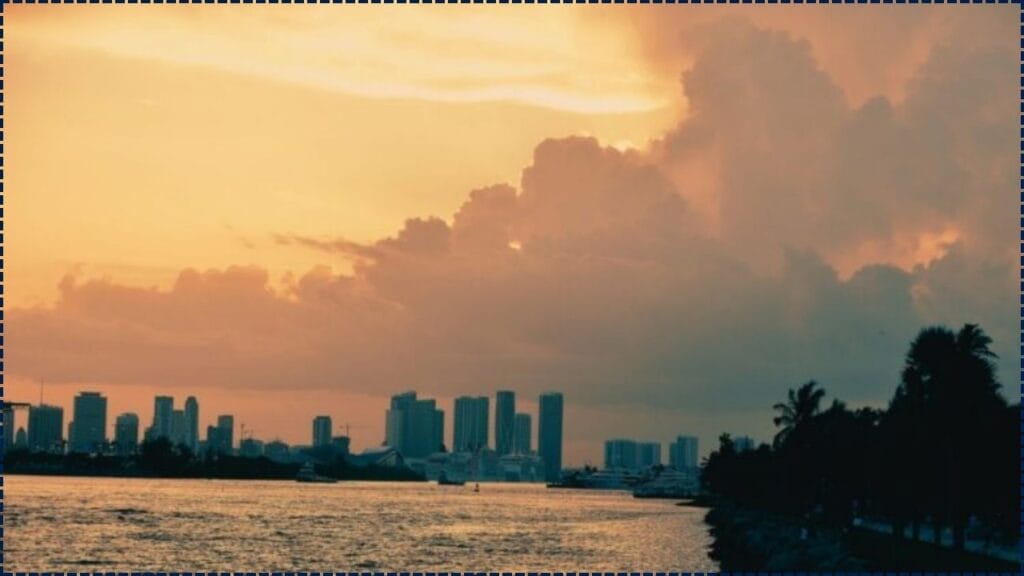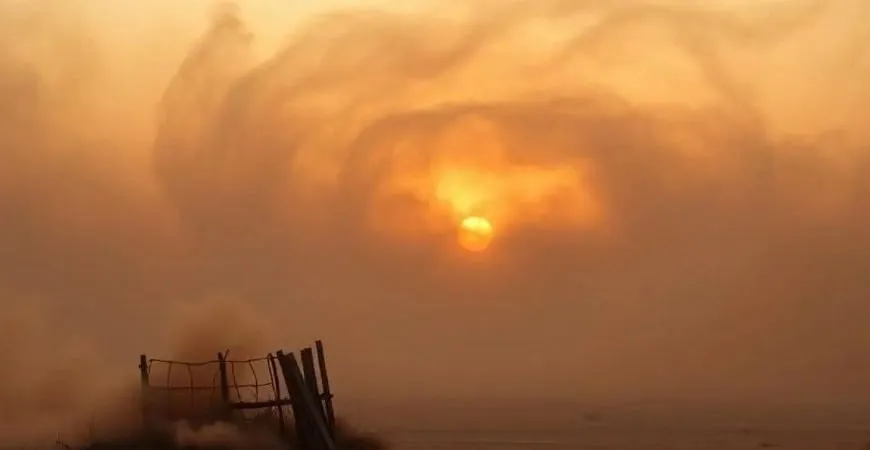Every summer, a powerful and ancient force of nature graces our skies, as Mother Earth sends us a profound, sandy reminder from across the vast expanse of the Atlantic Ocean. In June 2025, this majestic phenomenon manifested once more: a massive Saharan Dust Cloud—officially known as the Saharan Air Layer (SAL)—journeyed thousands of miles to reach the United States.

For many, it brought with it breathtakingly vivid sunsets, painting the horizons in hues of orange and purple that inspired awe and reflection. Yet, alongside this natural beauty, came noticeably drier air and, more significantly, serious questions about its potential influence on this year’s hurricane season, a topic of vital concern for coastal communities and beyond.
Saharan Dust Cloud Reaches U.S.
| Topic | Details |
|---|---|
| Phenomenon | Saharan Dust Cloud / Saharan Air Layer (SAL) |
| Origin | Sahara Desert, North Africa |
| Arrival in U.S. | Early June 2025 |
| Affected U.S. Areas | Florida, Texas, Gulf Coast, southeastern states |
| Main Impacts | Hazy skies, poor air quality, suppressed hurricane formation, colorful sunsets |
| Health Risks | Asthma, COPD flare-ups, eye/throat irritation |
| Hurricane Impact | May delay storm development due to dry air and wind shear |
| Resources | NOAA SAL Tracker, AirNow.gov |
| Professional Relevance | Important for meteorologists, health professionals, air quality specialists, environmental planners |
The Saharan Dust Cloud of 2025 is more than a dusty sky—it’s a dynamic force that touches everything from public health to hurricane science. For Native and rural communities, it also echoes traditional wisdom: pay attention to the winds—they carry messages.
Whether you’re breathing a little heavier or enjoying a breathtaking sunset, this global phenomenon is a reminder of just how interconnected our world really is.

What Is the Saharan Dust Cloud?
The Saharan Air Layer is an immense, arid expanse of dusty air that originates over the vast, sun-scorched Sahara Desert in Africa, carrying with it a profound connection to the Earth’s natural cycles. Each year, powerful wind currents gently guide this warm, dry air mass on an extraordinary transatlantic journey, often extending its reach to the vibrant shores of the Caribbean, the diverse landscapes of Central America, and the resilient communities along the U.S. Gulf Coast, touching lives across continents.
Soaring gracefully at altitudes between 5,000 and 20,000 feet—akin to the cruising heights of commercial airliners—this remarkable atmospheric phenomenon is laden with fine, mineral-rich particles, once humble grains of desert sand, now transformed into a dynamic force that weaves together ecosystems and cultures across the globe.
What You’ll See and Feel
- Hazy, milky skies
- Orange-pink sunrises and sunsets
- Warmer nights
- Drier air
But it’s not just pretty: people with respiratory conditions may struggle. Dr. Anita Locklear, an Indigenous physician specializing in lung health, explains:
“Even when the dust isn’t visible to the naked eye, it can trigger asthma attacks or make COPD symptoms worse. Be especially cautious with kids and elders.”
How the Dust Affects Hurricane Season
Here’s where the SAL really throws a curveball.
How It Suppresses Storms:
- Dry Air chokes off moisture that hurricanes need
- Wind Shear disrupts storm circulation
- Stabilizes the Atmosphere, preventing vertical cloud growth
So yes, the SAL can slow down hurricane activity, especially in early summer. But once it clears and the ocean heats up? Watch out.
Late-season storms (August–October) could become stronger because of the delayed development.
Health Concerns: Should You Worry?
If you’ve got asthma, allergies, or other lung issues, the dust can make breathing harder. Even healthy people might notice:
- Scratchy throats
- Runny noses
- Eye irritation
- General fatigue
Health experts recommend:
- N95 masks if you’re outside for long periods
- HEPA air purifiers indoors
- Keeping windows closed
- Using AirNow.gov to track local air quality
Real Stories from the Ground
Mariah, 29, from Tallahassee, FL:
“I was walking my dog and didn’t think much of the haze. Then I started coughing and felt tightness in my chest. Now I check the air quality app before going out.”
Jerome, 64, from Houston, TX:
“I’m retired military with lung damage. The dust season is rough every year, but this week has been worse. I stay indoors and run my purifier nonstop.”
How Scientists Track the SAL
Meteorologists and climate researchers use satellites, radar, and computer models to monitor these dust plumes in real time.
Top resources include:
- NOAA’s SAL Monitoring
- NASA Earth Observatory
- TROPICALTIDBITS.com for weather model forecasts
Professionals in environmental science, public health, and climate policy use this data to:
- Predict storm risks
- Plan public health advisories
- Model climate trends
Is There an Upside? Yep.
Even though SAL can make the air tough to breathe, it also does some good:
- Fertilizes the Amazon with iron, a key nutrient for rainforest growth
- Feeds plankton in the Atlantic, helping marine life thrive
- Reduces hurricane risks early in the season
- Builds beaches in parts of the Caribbean
Saharan Dust Cloud Reaches U.S. Prepare: A Quick Guide
- Monitor Daily Conditions: Use apps like AirNow, Windy, or Plume Labs to track the dust index and AQI (Air Quality Index).
- Protect Your Home:
- Use weather stripping to seal windows
- Run HEPA air purifiers 24/7
- Keep pets indoors when AQI is above 100
- Prep for Hurricane Season:
- Review evacuation plans
- Restock go-bags and first-aid kits
- Monitor storm forecasts weekly from NOAA
Related Links
This 50 Cent Coin Could Be Worth a Fortune: Check Why You Should Hold Onto It!
U.S. May Eliminate Tip Taxes Soon – Check How This Could Benefit Millions of Workers!
The Future of Saharan Dust
Long-term studies suggest climate change may increase both the frequency and intensity of Saharan dust outbreaks. According to NOAA and peer-reviewed models, warmer global temperatures could:
- Alter wind currents
- Increase desertification
- Push more dust into the Atlantic Basin
This means more summers like 2025—dustier, drier, and more unpredictable.
FAQs
Q: Does this mean fewer hurricanes this year?
A: Not exactly. The SAL may delay them, but once sea temperatures rise and the SAL weakens, hurricane activity could spike later in the season.
Q: Can Saharan dust damage my car or plants?
A: Not usually. It may leave a thin film on cars or outdoor furniture. Rain usually washes it away.
Q: Can this help people who suffer from mold allergies?
A: Ironically, yes. SAL’s dry air may lower humidity, which can help reduce mold in some areas.








